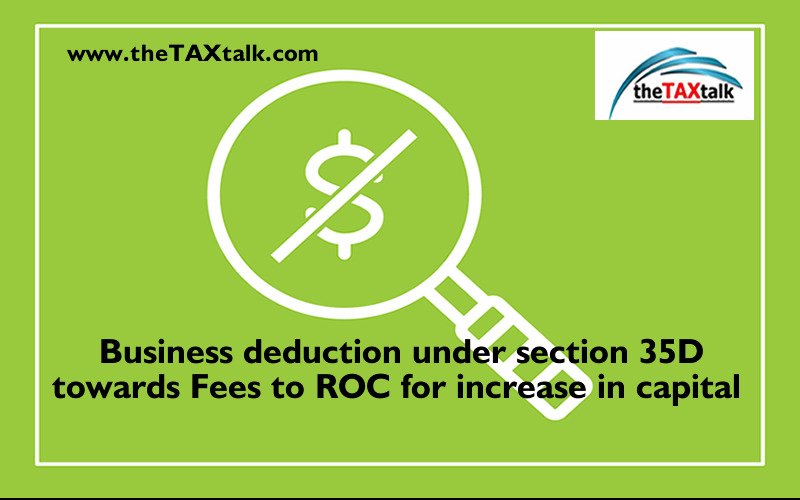![]()
Business deduction under section 35D towards Fees to ROC for increase in capital
Short Overview ROC expenses as fees for enhancement of capital would not be considered as revenue expenditure. Thus, AO was justified in treating the payment made by assessee-company to ROC for increase in capital as capital expenditure.
Assessee-company debited preliminary expenses and claimed deduction under section 35D. It was submitted that the said expenditure was in the nature of payment to ROC for increasing the capital of the company and the same was revenue expenditure. However, AO disallowed the same by holding that payment to ROC for increase in capital was a capital expenditure.
It is held that In view of Supreme Court decision in cases of Brooke Bond India Ltd. v. CIT (1997) 225 ITR 798 (SC) : 1997 TaxPub(DT) 1116, (SC) and Punjab State Industrial Development Corporation Ltd. v. CIT (1997) 225 ITR 792 (SC) : 1997 TaxPub(DT) 0919 (SC), ROC expenses as fees for enhancement of capital was not a revenue expenditure. Thus, AO was justified in treating the payment to ROC for increase in capital as capital expenditure.
Decision: Against the assessee
Followed: Brooke Bond India Ltd. v. CIT (1997) 225 ITR 798 (SC) : 1997 TaxPub(DT) 1116 (SC) and Punjab State Industrial Development Corporation Ltd. v. CIT (1997) 225 ITR 792 (SC) : 1997 TaxPub(DT) 0919 (SC).
IN THE ITAT, HYDERABAD BENCH
P. MADHAVI DEVI, J.M. & L.P. SAHU, A.M.
Moldtek Packaging Ltd. v. Asstt. CIT
ITA No. 938/Hyd/2017
2 July, 2021
Appellant by: K. Sriram & Raghuram Praturi
Respondent by: Sunil Kumar Pandey, DR
ORDER

